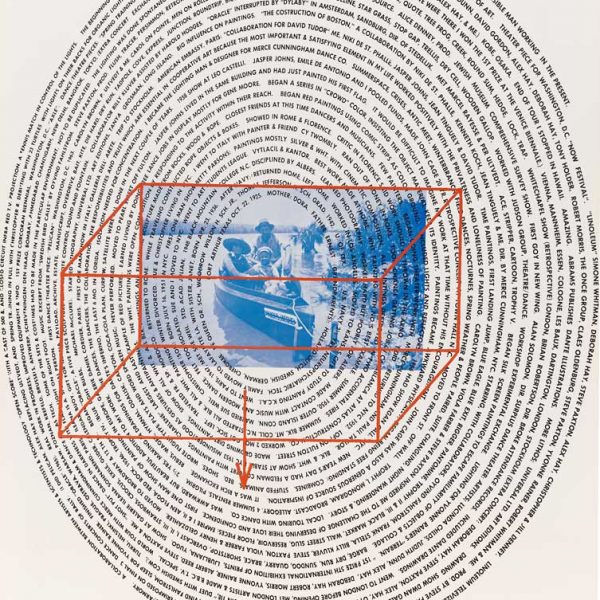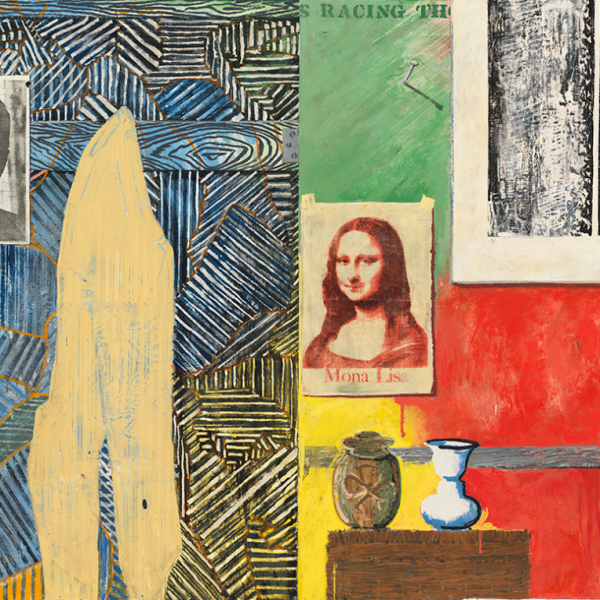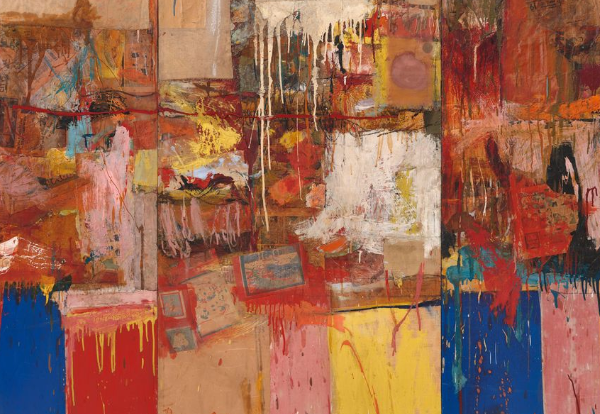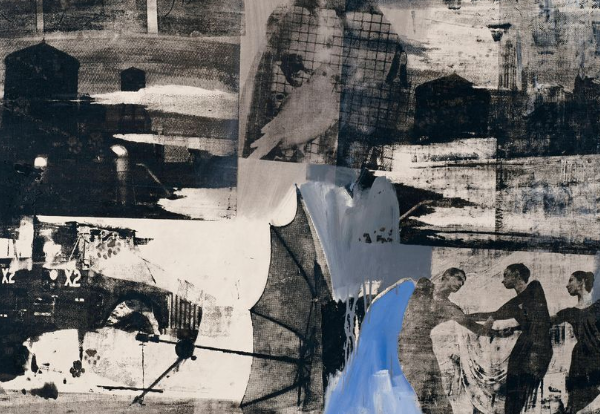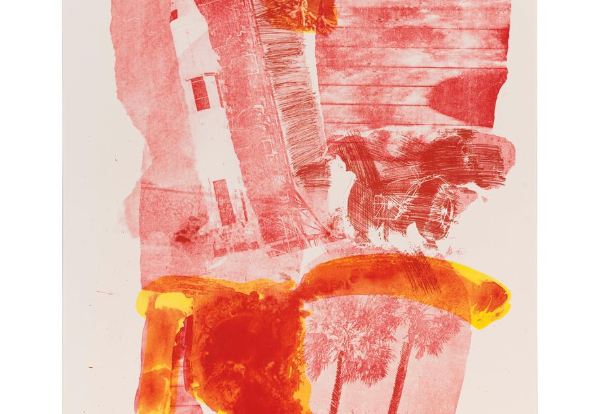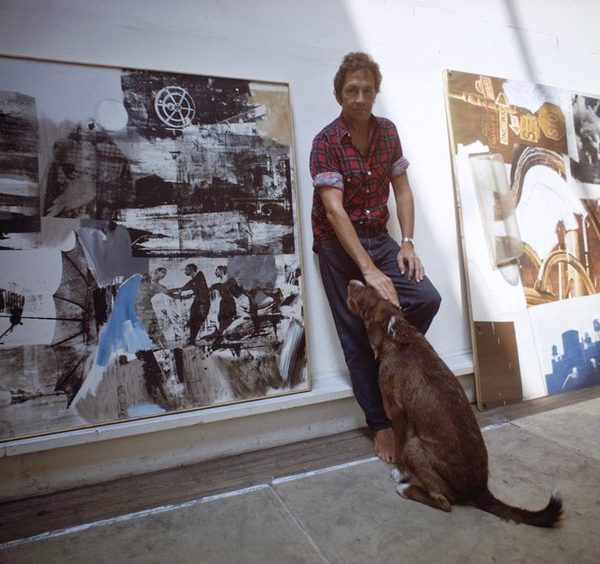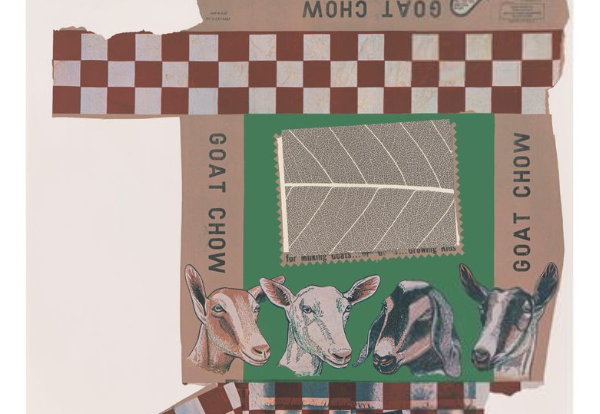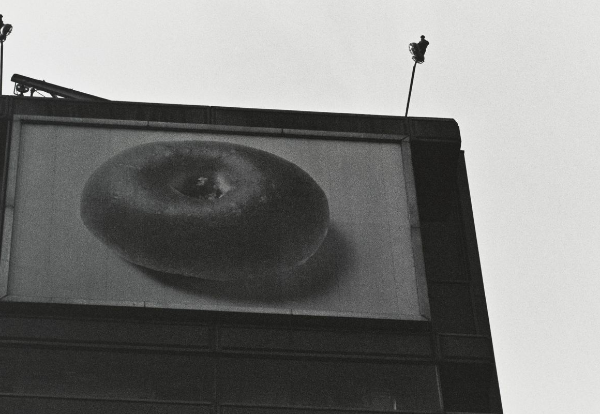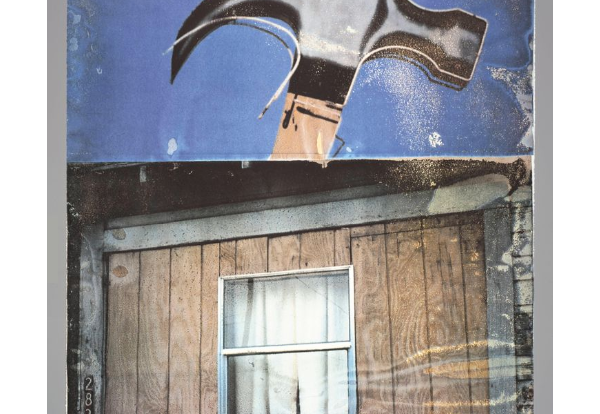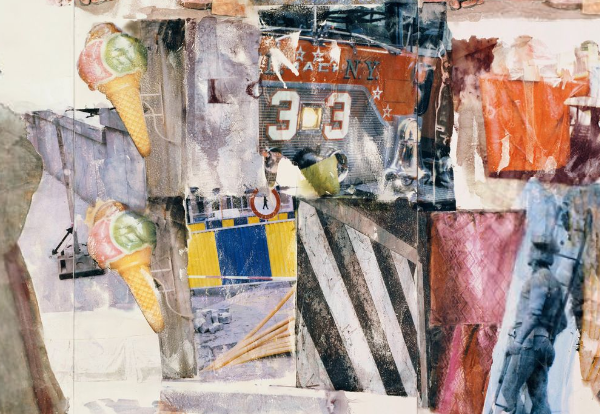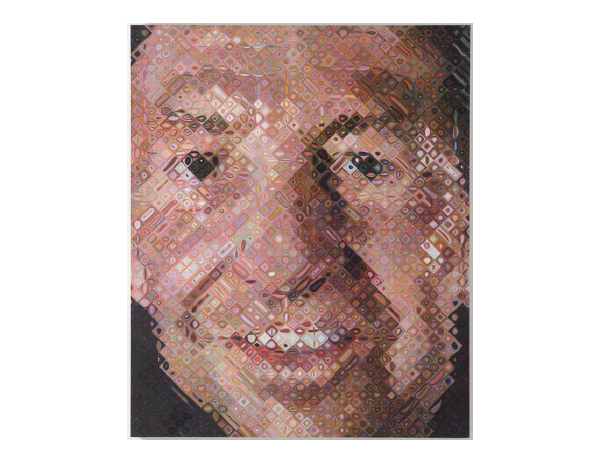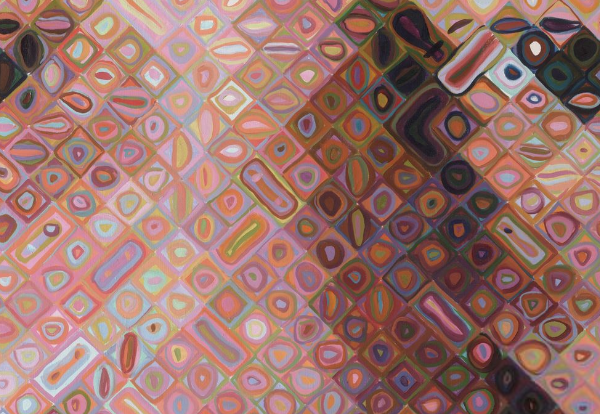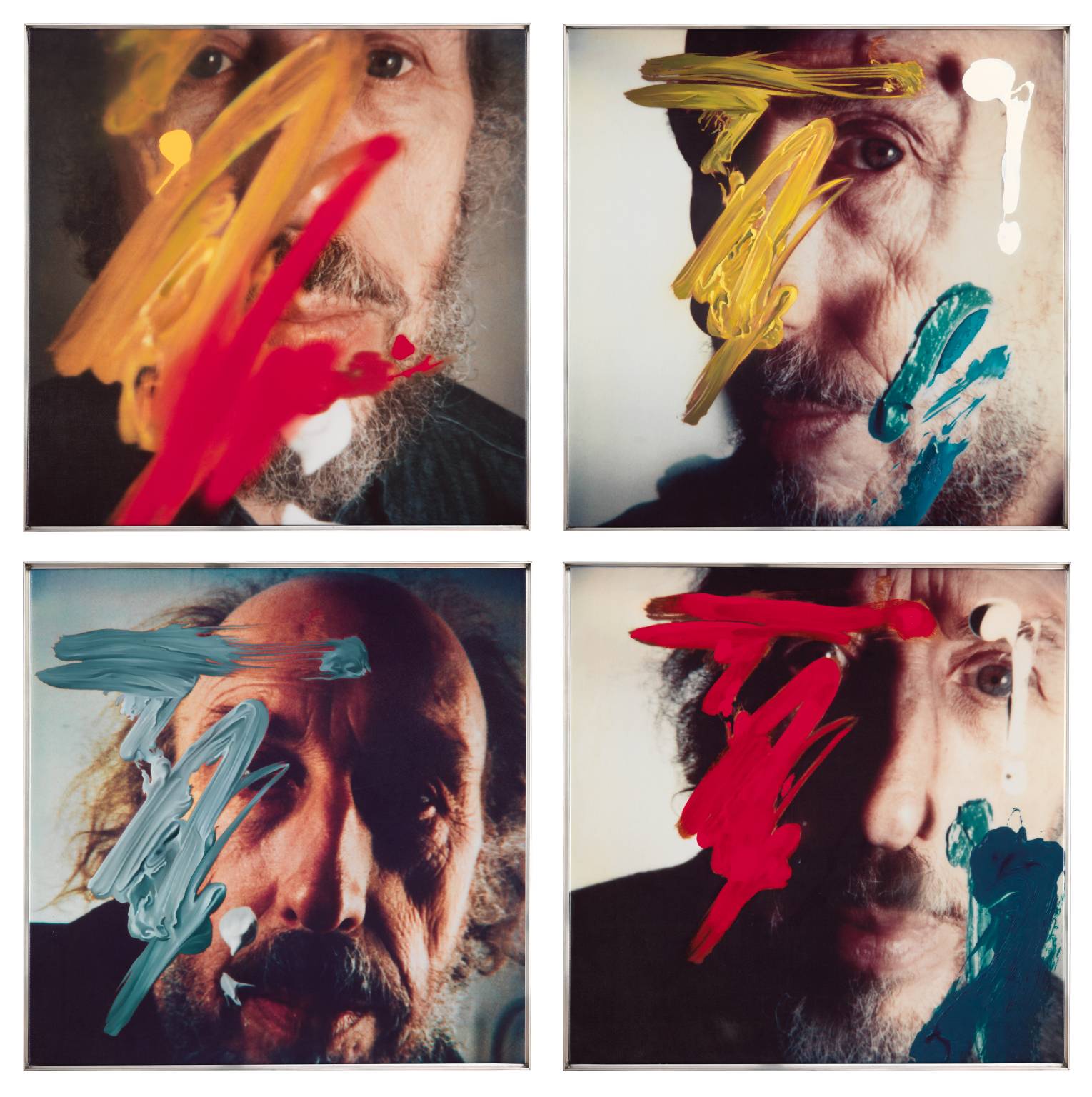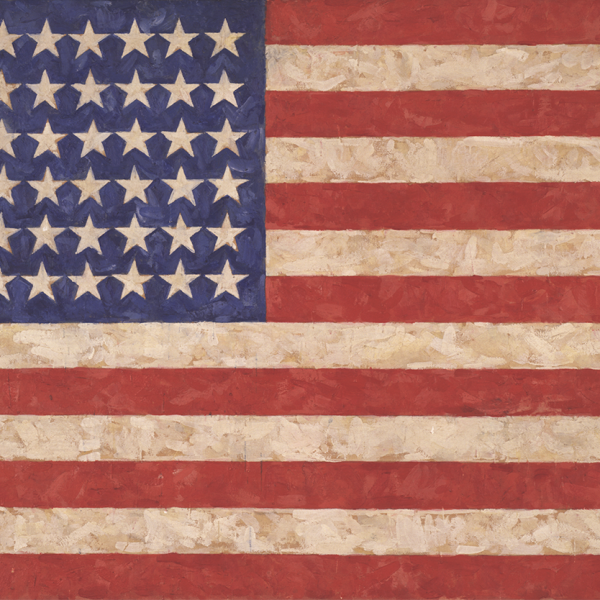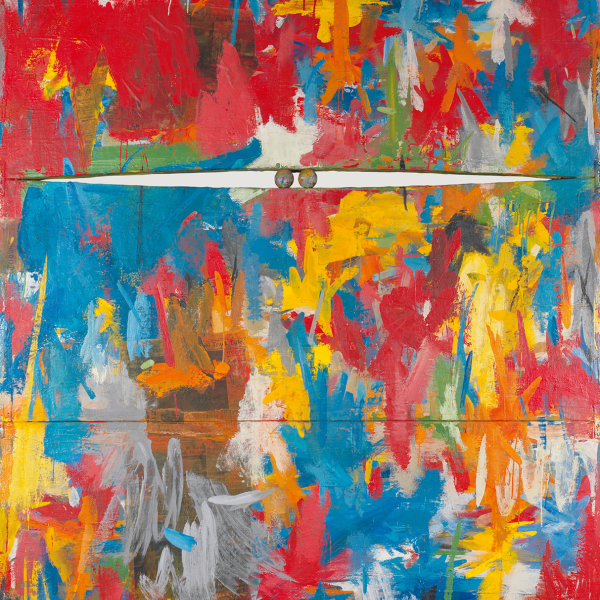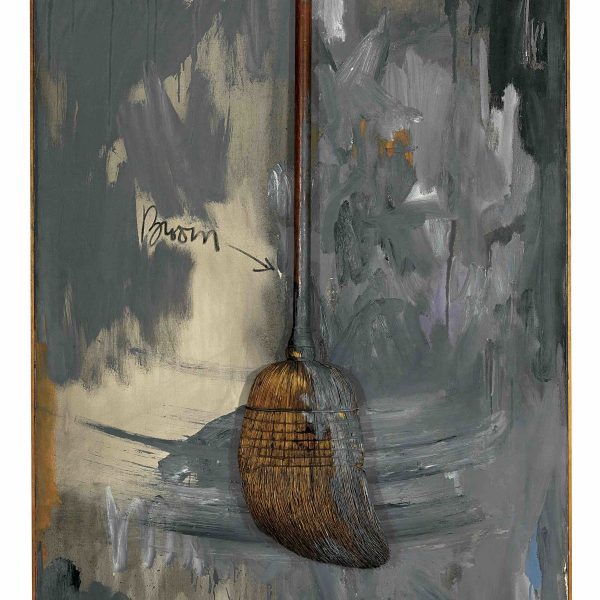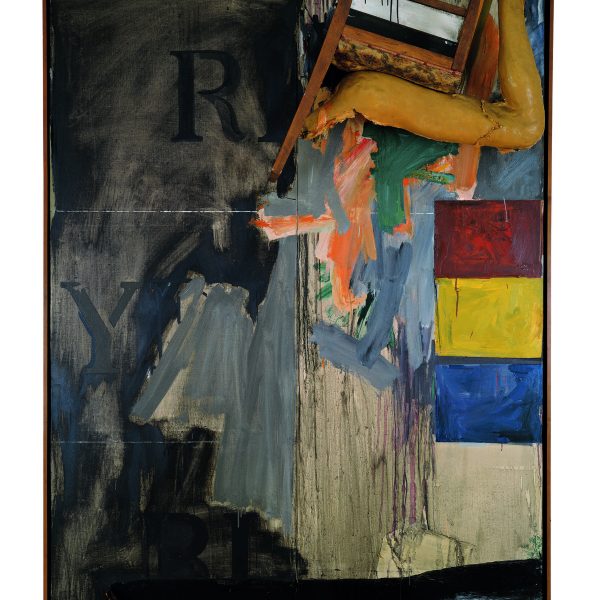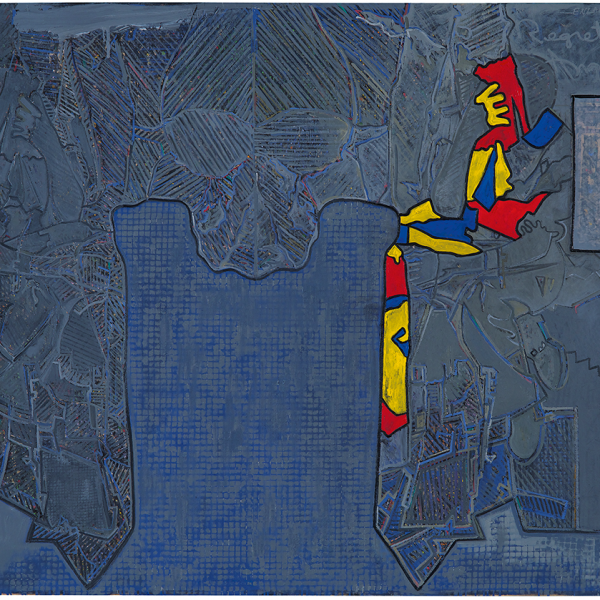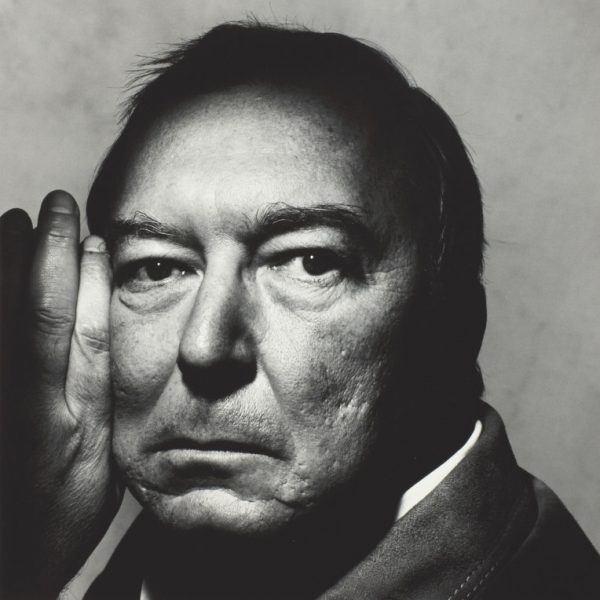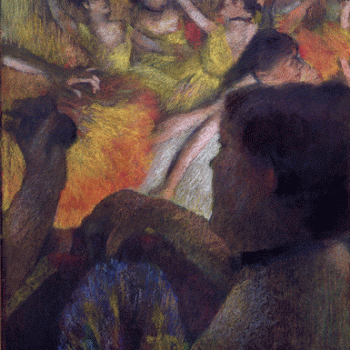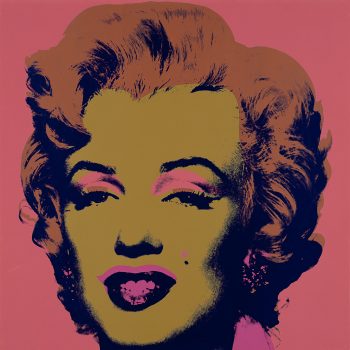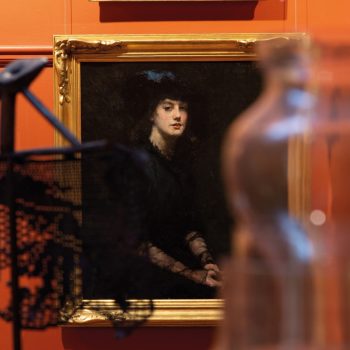______________________________________________
Learn about the beginnings of Pop Art! Discover how Rausenberg and Johns focused on iconographic references from daily life and by so doing connected with audiences both directly and obliquely.
____________________________
Robert Rauschenberg (1925 – 2008) and his friend Jaspar Johns (1930 -) both occupied studios in Pearl Street New York in the early 1960s. As early practitioners of Pop Art, both have major retrospectives either on or about to start; Robert Rauschenberg at San Fransisco Museum of Modern Art and Jaspar Johns at The Royal Academy London. Both hold a special place in the heart of this writer as two of the most interesting artists to be become acquainted with as an Art History student in Auckland in the 1990’s. Although it could not be said that work of the kind they produced had not been done before in some form, they were also contemporary with and had something in common with the Abstract Expressionists (see Robert Rauschenberg’s Bed from 1955 where Rauschenberg’s own bed and linen is combined with splashes of paint in a type of self-portrait).
However in the main, Abstract Expressionists “Through exploration of gesture, line, shape, and color…hoped to evoke strong emotional reactions.”
SFMOMA: San Fransisco Museum of Modern Art
ROBERT RAUSCHENBERG: Erasing the rules
November 18, 2017–March 25, 2018
“From the 1940s until his passing in 2008, Rauschenberg worked with everything from photography to items scavenged from New York City streets to vats of bubbling mud. More than 150 of Rauschenberg’s artworks, including prints, sculptures, paintings, and Combines (works that incorporate painting and sculpture), will be on view in the retrospective Robert Rauschenberg: Erasing the Rules, celebrating the artist’s continual experimentation with materials and collaborative working processes. The exhibition demonstrates how, with razor-sharp humor and intelligence, Rauschenberg broke down boundaries between disciplines, anticipated many of the defining cultural and social issues of our time, and redefined what art could be for the generations of artists who followed.”
A “Combine” is neither a sculpture nor a painting but rather a hybrid of the two. Robert Rauschenberg developed the term to describe a series of works he began in 1954 that eluded traditional art media categories. Collection (1954/1955) is the artist’s first “Combine painting,” an early type of Combine that hangs on the wall like a traditional painting but reaches into three dimensions with various elements attached to the work’s surface—such as the silk veil over the mirror attached just off-center and the found wood scraps along the top edge. This work also marks a new approach to color. In a decisive move away from the experimental monochromatic series of white, black, and red paintings he created between 1951 and 1953, Rauschenberg began Collection by covering three panels with red, yellow, and blue fabric and layering them with innumerable collaged, drawn, painted, and sculpted elements. The same year that Rauschenberg began Collection he started to experiment with extending the three-dimensionality of the Combines, incorporating both wall and floor components and even creating fully freestanding works, such as Untitled, in the Panza Collection at the Museum of Contemporary Art, Los Angeles.”
“The spiral of text on the central panel of Autobiography (1968) resembles a fingerprint and offers an abbreviated history of Rauschenberg’s life and artistic career. At the heart of the text, a red box anchored by a downward arrow frames a transferred photograph of the artist as a child boating with his parents, Dora and Ernest Rauschenberg, near Port Arthur, Texas. Within the text, the arrow connects the words “Family” and “It was a rich exchange,” linking a reference to the most significant relationships of his childhood with one from adulthood—his close friendship with composer John Cage (1912–1992).”
“In July 1969, Robert Rauschenberg was invited by the National Aeronautics and Space Administration (NASA) to Cape Canaveral, Florida (then known as Cape Kennedy), to witness the launch of the historic Apollo 11 mission. Asked by the NASA Art Program to commemorate the first manned spaceflight to the moon, Rauschenberg enjoyed unrestricted access at NASA’s Florida facilities. After the launch, Rauschenberg began work on Stoned Moon (1969–70), a series of thirty-four lithographs that juxtapose hand-drawn passages with imagery that pairs the lush Florida landscape with the crisp industrial aesthetic of the space race.”
“In October 1994, a number of luminaries in the fields of art, politics, fashion, and commerce gathered in Robert Rauschenberg’s Lower Manhattan studio to witness the unveiling of Tribute 21, a series of twenty-one poster-size prints the artist had produced for a newly formed humanitarian aid project, also called Tribute 21. Conceived by Japanese corporation Felissimo and bolstered by Rauschenberg’s artistic vision, this initiative sought to harness art’s power to promote social, economic, and cultural development and improve social conditions at the dawn of a new century. Felissimo’s expansive vision embraced nearly all aspects of modern life, aiming to engage “music, cinema, children, health, technology, dance, nature, labor, environment, and space,” to name but a few of the areas listed in the organization’s promotional literature. Given his stature as an artist and his long-standing involvement with humanitarian causes, Rauschenberg was the perfect representative for this ambitious project. Produced in collaboration with master printer Bill Goldston at Universal Limited Art Editions (ULAE), each of the Tribute 21 prints highlights an individual whose contributions to his or her respective field signaled a commitment to building a more peaceful, just, and flourishing society.”
“Scanning (1963) is part of an extended series of works Robert Rauschenberg produced between 1962 and 1964 that combine silkscreened photographic images with lush, gestural passages of paint. The imagery seen here—for example, animals, athletes, the urban landscape of New York, and various emblems of American culture—takes up many of the central themes that recur throughout his art. These broad references to nature and society are blended with the autobiographical: the pictured dancers are performers in the Merce Cunningham Dance Company, for which Rauschenberg designed costumes, lighting, and sets from 1954 to 1964. Through the combination of personal and universal references, Scanning encapsulates the artist’s sweeping, democratic engagement with the world around him.”
Text and images SFMOMA website
The Robert Rauschenberg Foundation
Jaspar Johns at MoMA
______________________________________________
Richard Hamilton, Just what is it that makes today’s home’s so different, so appealing? (early 1950’s) collage 260 x 248mm
“This image is among the most famous in British post-war art. It has come to define the rise of consumer society in the mid to late 1950s and is an icon of Pop art, although the original collage created in 1956, on which this print is based, pre-dates that phenomenon by several years.”
In 1990 Hamilton described the work as “…ideas crowding into our post-war consciousness…” Post World War II saw the regeneration of large scale industry and manufacturing for the domestic home.
“In planning the collage, Hamilton typed a list of categories he planned to incorporate: ‘Man, Woman, Food, History, Newpapers, Cinema, Domestic Appliances, Cars, Space, Comics, TV, Telephone, Information’ (quoted in Richard Hamilton, 1992, p.149).”
“Imagery that fitted into Hamilton’s categories were sourced from a stash of American magazines that McHale had brought back from the United States. He found the work’s title in a caption to an illustration in the cast-off trimmings from the magazines. The finished collage presents all the multiple ways of communicating information available at that time, reflecting Hamilton’s ironic interest in popular culture and modern technology.”
Prophetically in the centre of the work, a crowned FORD motorcar logo alludes to cars; it is a similar size to the head of the muscular man, standing in a body-builder’s pose next to it. He holds a giant lollipop bearing the word ‘POP’ at the level of his groin, pointing towards the semi-naked woman sitting in a ridiculously artificial pose on the sofa opposite.”
For a full account of the importance of this work to the genre of Pop art visit the TATE Gallery website.
______________________________________________
The term Pop Art was first used around 1954 to describe a group of British artists, but by the early 1960s it had become synonymous with a new American art movement that appropriated images, techniques, and materials from mass media and popular culture and presented them in bold, graphic formats.
______________________________________________
Jasper Johns has occupied a central position in American art since his first solo exhibition in New York in 1958.
____________________________
His treatment of iconography and appropriation of objects, symbols and words makes the familiar unfamiliar, achieving this through the distinctive, complex textures of his works. Through his ground-breaking paintings and sculptures, Johns established a decisive new direction in an art world that had previously been dominated by Abstract Expressionism.
Rather than direct representation or abstraction, Johns made signs, like flags and targets, the main images in his works. The “things the mind already knows” were his ideal subject because of the host of varied meanings each carried with it. This fostered the perceptual ambiguity and semiotic play at the heart of his works. Johns quoted the gesturally evocative Abstract Expressionist brushstroke, using the idea of the artist’s mark as merely another symbol that enhanced the multiplicity of meanings and interpretations in his paintings.” http://www.theartstory.org/artist-johns-jasper.htm
Jasper Johns: ‘Something Resembling Truth’ is the first comprehensive survey of the artist’s work to be held in the UK in 40 years. Comprising …the continuities and changes that have occurred over the past six decades and the curiosity and experimentation that Johns continues to apply to his current practice.
During the 1960s Johns added an array of household and studio objects and imprints and casts of the human figure. The works of the 1970s are dominated by an abstract pattern, referred to as “crosshatchings”. During the 1980s and 1990s Johns introduced a variety of images that engaged with the ambiguities of perception and ongoing themes involving memory, sexuality, and the contemplation of mortality. From this time, Johns increasingly incorporated tracings and details of works by artists including Matthias Grünewald, Pablo Picasso and Edvard Munch. By the early 2000s Johns had embarked on the pared-down and more conceptual Catenary series which, along with other recent works such as 5 Postcards, 2013 and Regrets, 2013, shows the rich productivity and vitality of this late phase of his career.”
Text and images: The Royal Academy website

